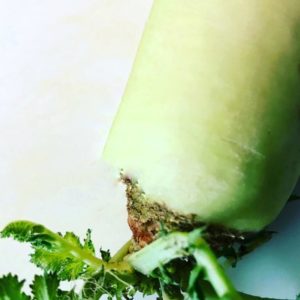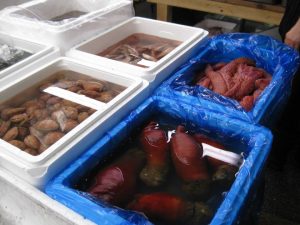 In Japan, Japanese chefs prefer to use raw materials that are in season when they cook food. In Tokyo, Japanese dishes often contain ingredients that most people outside of Japan do not know like Chinese horse radish.
In Japan, Japanese chefs prefer to use raw materials that are in season when they cook food. In Tokyo, Japanese dishes often contain ingredients that most people outside of Japan do not know like Chinese horse radish.
Chinese horse radish is a very popular raw material in Japanese cuisine.
In Tokyo, Chinese horse radish is used in various ways. Chinese horse radish is a raw material that is often pickled and eaten as a garnish. There are many restaurants that grate chinese horse radish and eat it as topping on various classic Japanese dishes.
In most Asian supermarket you can buy Chinese horse radish all year. Horse radish is a winter vegetable which is harvested during winter months.
Read more about Sushi chef & sake sommelier Zoë Escher
_
Zoë has held sushi courses and cooking classes for A. P. Moller – Maersk, Hugo Boss Nordic, Novo Nordisk, Novartis, Velux, Gorrissen Federspiel, Beierholm revision, Elbek & Vejrup and many more.







